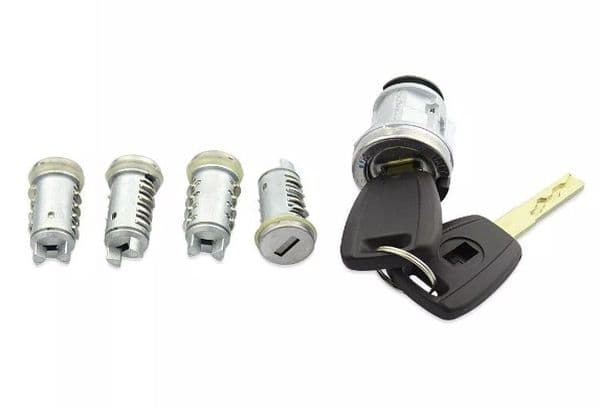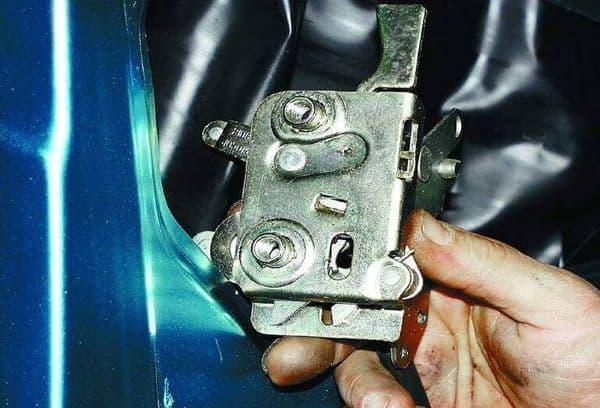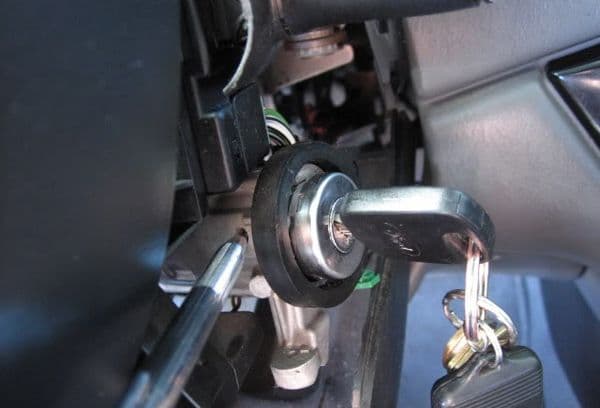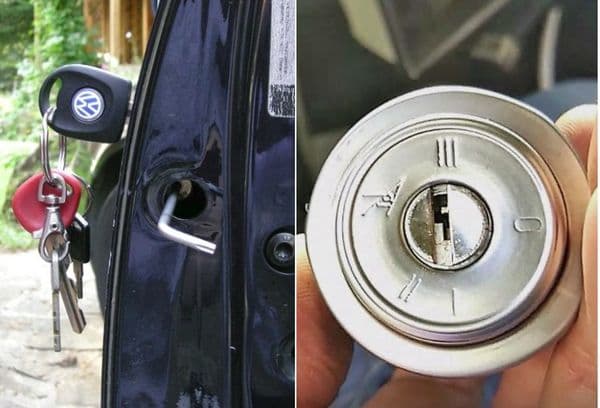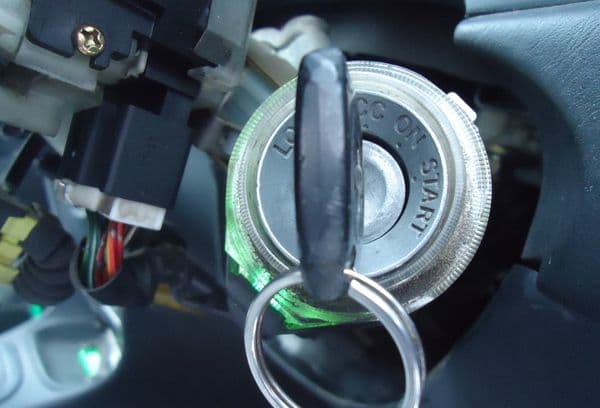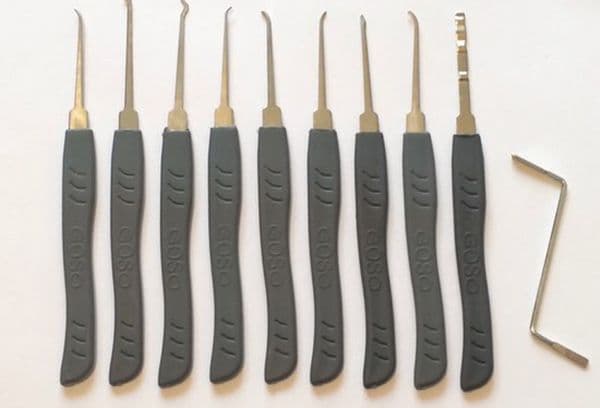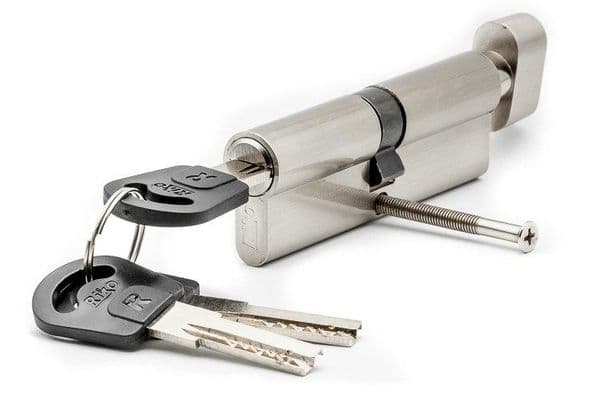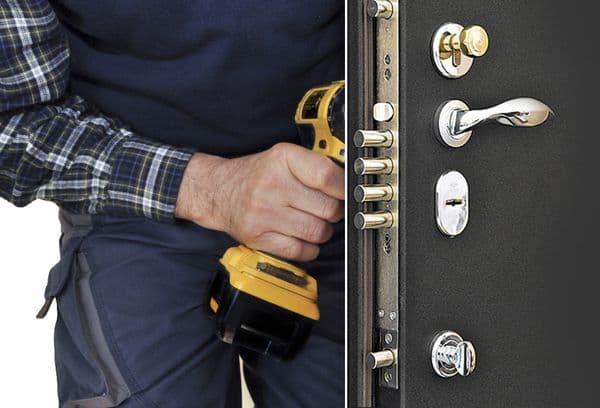How to safely remove the door lock and ignition lock cylinder
Content:
Cylinder locks are not the most reliable and durable, but they have an undeniable advantage: to replace them, it is not necessary to rearrange the entire lock, it is enough to update the mechanism. It is easiest to remove the larva if the key is turned. Without a key, you have to disassemble or break the device.
The task of removing the larva is to lower the stopper, which is engaged with the bolt and lowers only if the key is turned.
Normal lock replacement
The simplest procedure is with a working mechanism:
- Remove all exterior parts that lock the lock.
- Insert the key.
- Rotate and push / pull.
In the car door
To change the larva or to clean and lubricate it more thoroughly, you will have to apply patience and accuracy:
- Remove the handle from the passenger compartment.
- Remove the skin.
- Disconnect the link leading to the locking element at the bottom of the door.
- Remove the bracket holding the mechanism (in Lada), unscrew the screw performing the same function.
- Push or pull the larva from the outside.
Ignition cylinder
Here you will need to disassemble the entire structure that secures the ignition unit to the steering rack or wade under the dashboard. At the same time, shear screws are of great difficulty: they are not reused, and in some cases it is difficult to find their exact analogues.
Important
purityis.decorexpro.com/en/ magazine strongly recommends that you disassemble the lock, following the instructions for the vehicle exactly.
When the whole mechanism is disassembled, it remains to turn the key and pull out the larva.
If the key does not turn
In the case of the ignition switch, it comes down to the previous scheme: disassemble the lock as much as possible. Then you need to knock out the stopper pin and remove the mechanism. In extreme cases, you have to drill it, and then knock it out.
Tricky Reception
Most often, the key in the ignition stops turning for three reasons:
- abrasion of grease;
- dust clogging (solved by flushing WD-40 or other car cleaners);
- metal fatigue.
For reference
The cylinder lock is based on a number of pins (pins), consisting of two halves and going up and down on the springs. To open the lock, you need to place all the pins at a given height, that is, so that they exactly fall into the recesses of the native key.
Over time, the springs weaken and stop raising the pin. Such a "tired" element can simply be removed from the lock - the car will start again, with a native key, so that you do not need to change all the locks in the car. If more than one pin is broken, then dismantling is only a temporary measure, because such a car will start with any third-party key.
Door locks
Very often, the key does not rotate in the auto door, because it is rusted (it was rarely used) or iced. The first is solved by a rust converter (it will take quite a lot of time), the second - by heating.
How to take out a larva without a key
If there is no key to the ignition switch, the procedure is exactly the same as if the key was, but did not turn. On the front doors, most often there is no way to remove the lining and disassemble the lock. Therefore, if there is no key, the lock is opened or broken.
Master key
This method will require at least 10 minutes of time and two wires: straight and bent at the end.
Procedure:
- Both wires run into the well.
- Tap the bent pins until they reach the desired position.
- With a straight wire, constantly try to crank the cylinder.
Bumper key
It replaces the native key, but is ineffective in the problem being solved with the larva. The essence of its action: bumping is inserted into the well, a blow is made to the head with a hammer, pins bounce off a sharp push and, returning to their original position, pass the point when the cylinder is released - you need to have time to turn it. In the case of replacing the larva, you will have to turn and push it at the same time, and all this - until the pins again lock the lock.
Drilling
If you need to leave the house urgently, the most effective and fastest method is to take a drill bit wider than the well and make a hole in the lock. The stopper and crossbar will be disconnected from each other, and the larva will be easily squeezed out. The same technique works on the door of a car. But the ignition switch cannot be “repaired” like that.
Knocking out
This is one of the most inefficient ways. Procedure:
- Take a chisel, slightly wider than the well, but not wider than the larva.
- Set on the larva and beat the butt with a hammer until the lock flies out.
Breaking out
The essence of the method is to grab the larva with a special, gas or other key (first, all facade elements must be removed) and cranked. The lock will be broken, but the door will open.
A jammed lock can be enough to lubricate, but if the cause is metal wear or the key has been lost, you will have to disassemble the structure to get to the stopper, or select an analog that will open the lock without damaging it.
